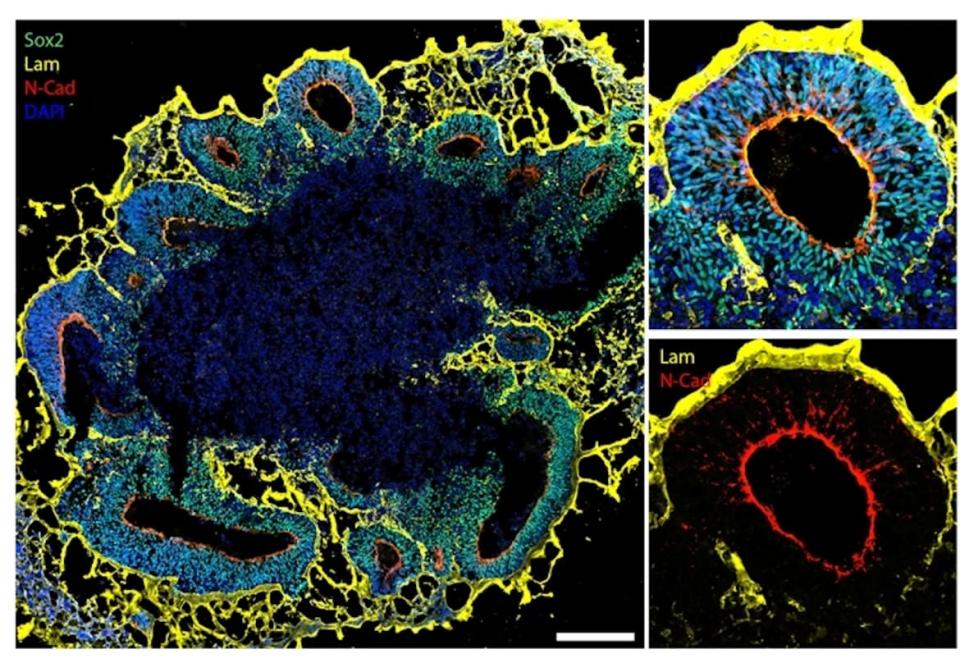Organoids Help Researchers Understand How Autism Develops in the Human Brain

- Oops!Something went wrong.Please try again later.
Autism spectrum disorder (ASD) is a neurodevelopmental disorder affecting around one in 44 children in the U.S., according to the CDC. It was first described by Austrian-American psychiatrist Dr. Leo Kanner in a seminal 1943 paper and since then, scientists have discovered hundreds of genes linked to the disorder. Despite this wealth of insight, how exactly one’s genetics influence the autistic brain is still mired in mystery.
“One of the real challenges in autism is that we don’t have much of a biological understanding,” James McPartland, a clinical psychologist and autism researcher at Yale University, told The Daily Beast. “In most cases, we don’t even understand mechanisms in terms of phenotype. It’s like if I say a person with autism is less likely to make eye contact or more likely to have a strong response to sound, we don’t even understand exactly what’s the biological mechanism.”
But scientists are digging closer to unearthing that information by growing miniaturized human brains, called organoids, in the lab. In a new study reported in the journal Cell Reports on April 5, researchers in Austria took clumps of brain cells containing a mutated CHD8 gene—considered a strong genetic risk factor for autism, among countless others—and were able to glimpse how the gene affects early brain development.
“This is a very exciting direction of research,” Andrey Vyshedskiy, a neuroscientist at Boston University who was not involved in the study, told The Daily Beast. “Organoids are a new technology in the last decade and are allowing us to conduct experiments that can track neuronal development over time.”
Bite-Sized Brains Grown in a Lab Could Help Treat Fatal Diseases
“Until very recently, the only way to look at the changes in the brain of an individual with autism would be to reach out to tissue biobanks, look at their brain tissue under the microscope and compare them to tissues [from non-autistic individuals],” Ana Kostic, a clinical scientist with the Seaver Autism Center for Research and Treatment at Mount Sinai Hospital, who was not involved in the new study, told The Daily Beast.
Another method depends on animal models such as fashioning mice with genetic mutations associated with autism, Gaia Novarino, a neuroscientist at The Institute of Science and Technology in Austria who led the study, told The Daily Beast. But a problem with studying mice modified with a mutated CHD8 is that they barely show macrocephaly, or an overly large head due to a greater brain volume and a symptom seen in some people with autism.
Going down the brain-in-a-petri-dish route, Novarino and her team took commercially available human stem cells and genetically altered one group to have the CHD8 mutation, leaving the other untouched. These two groups of stem cells were then coaxed to grow into functionally basic tissues containing neurons usually found in the brain.
“We could see by eye that the [CHD8 mutated] organoids were bigger,” said Novarino, a finding in line with earlier research. But her team also noticed something else: The types of neurons that grew came in at different times when comparing the CHD8-mutated mini-brain with its non-mutated counterpart.
“To make it simplistic, there are two types of neurons—those that are called inhibitory and those that are called excitatory,” said Novarino. “In many cases, what we observe is that the ratio either in the activity or the proportion of these neurons is changing.

Using specific biomarkers, it is possible to observe structural details of organoids (yellow and red) as well as all the organoid cells in blue and green.
While the researchers didn’t measure if there was an imbalance in terms of activity, what they did notice was that the timing of when these neurons were expected to appear was off. In the CHD8-mutated brain organoids, inhibitory neurons appeared much earlier and excitatory neurons developed later compared to the control organoid. There were also more types of brain cells that give rise to either type of neuron, suggesting the increase in brain volume is due to too many inhibitory and excitatory neurons being made.
The new findings are a promising first step to understanding the biological phenomenon behind autism, but they are not by any means a conclusive snapshot of the genetic spectrum behind the disorder. Only about 2 percent of people have a form of autism that’s due solely to one gene like CHD8, said Kostic. Typically, autism is due to a concert of risk-conferring genes working in tandem to cause the range of symptoms like difficulty with communicating and social interactions, and obsessive and repetitive behaviors.
“The other aspect is that we don’t really have the full understanding of all the patients who have mutations because of the diagnostic paths,” she said. “When there’s a developmental delay, not all patients get referred to a clinical or pediatric geneticist. We have a lot of patients who get a genetic diagnosis much later in life. We feel that there are a lot more people out there who are diagnosed with a developmental or other disorder that’s not necessarily due to a single gene.”

Gaia Novarino, a neuroscientist at The Institute of Science and Technology Austria, led the new brain organoid study.
Going forward, Novarino and her group do plan to incorporate more autism-related genes into their organoids to see how they shape brain development. The researchers also want to understand why the different types of neurons appear when they do, but she cautioned there are also no immediate clinical applications for treating autism.
“Maybe it could be used as a model to eventually find drug [treatments],” said Novarino. “But there’s absolutely no implication at the clinical level at this moment,” especially as this hardwiring is occurring at the embryonic level.
But what these findings do cement is brain organoids' place in the field of autism research, helping us see with granularity the goings-on in the brain—and hopefully helping scientists and clinicians design specialized and targeted pharmaceutical therapies for people with autism.
“The path between the bench and the bedside is much shorter thanks to this type of tool,” said Kostic. “It definitely brings us a couple of milestones closer.”
Got a tip? Send it to The Daily Beast here
Get the Daily Beast's biggest scoops and scandals delivered right to your inbox. Sign up now.
Stay informed and gain unlimited access to the Daily Beast's unmatched reporting. Subscribe now.

